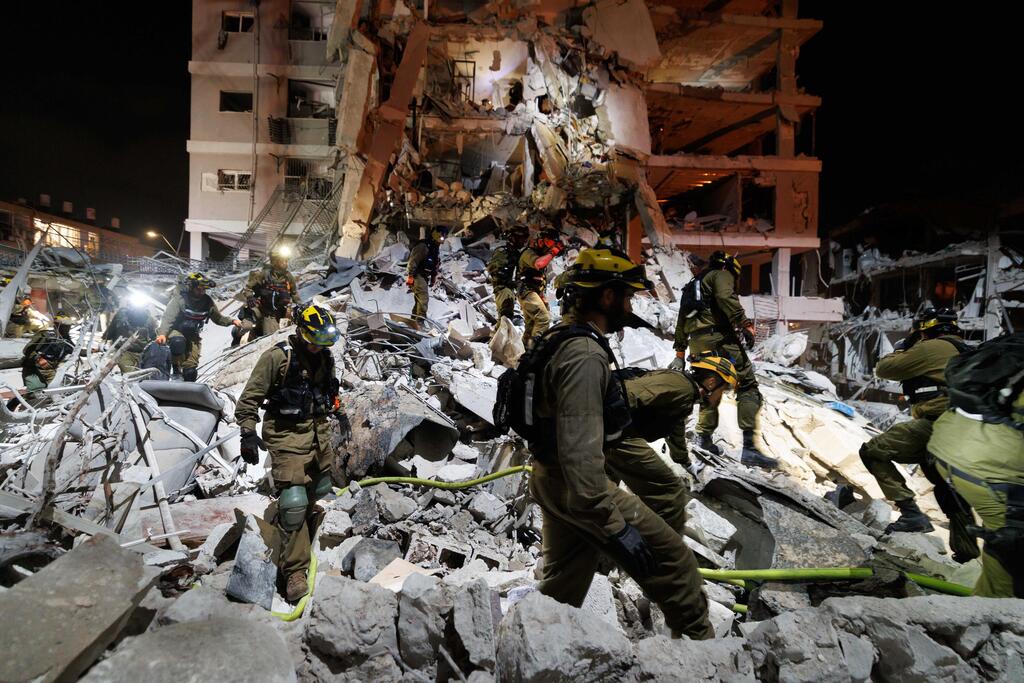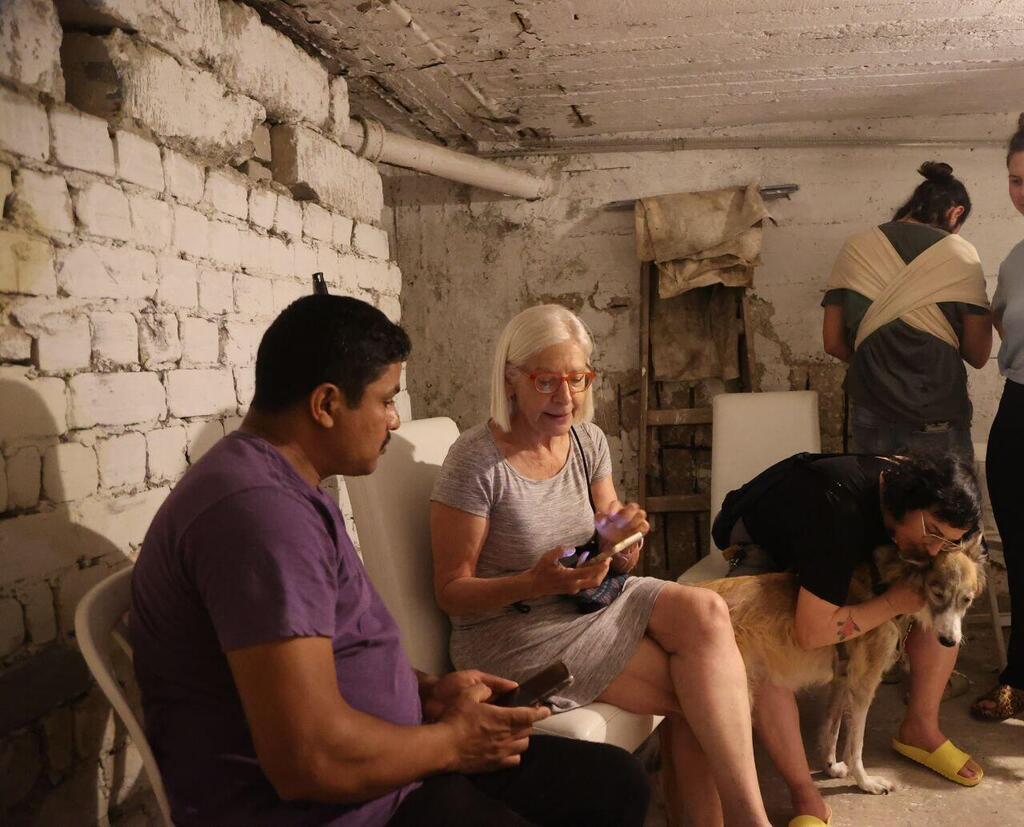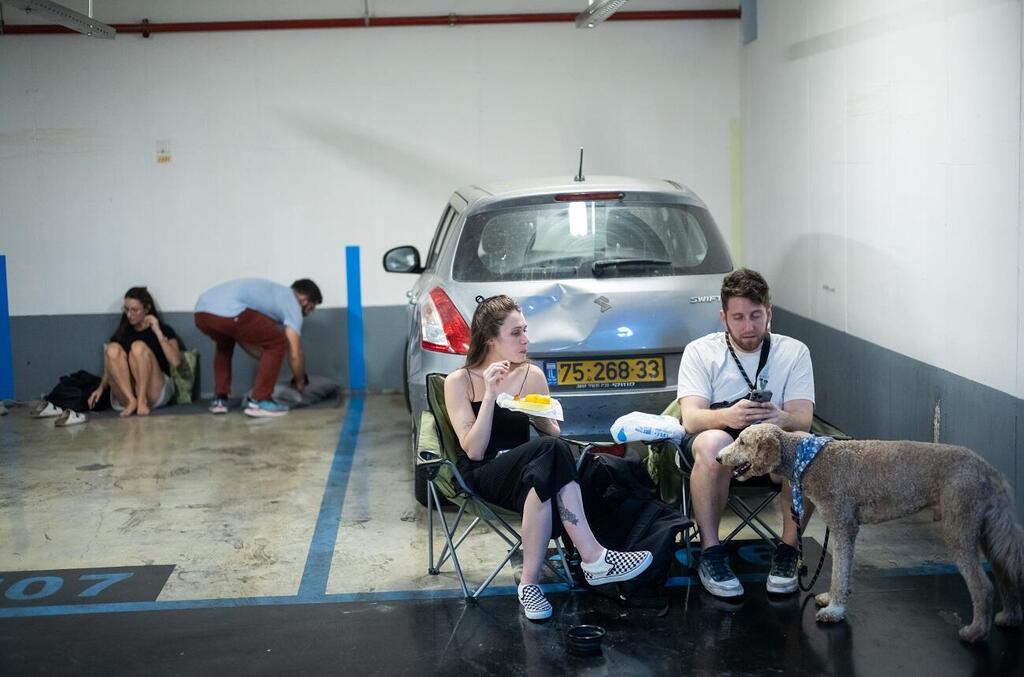Sirens wailed across Israel once again as Iran launched retaliatory strikes following Israel’s preemptive attack on Iranian nuclear facilities and senior military officials. The piercing alarms sent people racing to secure spaces—reinforced rooms in homes, apartment buildings and public shelters—seeking protection from incoming fire. But how effective are these shelters against Iranian ballistic missiles?
Israel’s residential reinforced rooms (mamadim), floor-level secure spaces (mamakim) and community bomb shelters (miklatim) are designed to withstand missile strikes and drone attacks, including those equipped with heavy warheads, according to the IDF Home Front Command.
“These shelters are the best solution for the citizens of Israel,” a source affiliated with the Home Front Command said. “Since the start of the war, anyone critically injured or killed was not in one of these shelters.”
Built from reinforced concrete and equipped with specially engineered blast-resistant doors and windows, these spaces are constructed to absorb and deflect powerful shock waves. The Home Front Command conducts regular inspections to ensure compliance with evolving standards. While no shelter can offer absolute protection, officials emphasize that these rooms give families the best chance of survival.
Israel first required protected spaces in new buildings under the 1951 Civil Defense Law, mandating that residential and industrial structures include designated safe areas to guard against conventional—and potentially chemical or biological—attacks.
The Gulf War in 1991 prompted a major policy shift. After Iraq launched Scud missiles at Israel, forcing residents to remain indoors for extended periods, the Home Front Command revised its strategy. In 1992, the focus moved from communal bomb shelters to private, in-home protected rooms, improving access to immediate safety.
The IDF explains the rationale clearly: While missiles and rockets have multiple components, the warhead is what causes the most damage and is the primary reason people must shelter.
“When the warhead hits the ground, the wall of a building, or any other object, it explodes,” the IDF stated in an online explainer. “As a result of the explosion, thousands of pieces of burning shrapnel and an intense shock wave are created. These pieces of shrapnel are liable to hit us, depending on the strength of the explosion and one’s proximity to it.
“When we stand exposed in the vicinity of the focus of the explosion, for example outside, on the porch, or by the window, we are liable to be struck by a direct hit of shrapnel, which fly around at great speed,” the explanation continues. “In addition, the shock wave at the time of the explosion is liable to send us flying and fling us about forcefully and may even cause serious injuries to the internal organs in our bodies.”
The missiles fired from Iran in recent days have “very big warheads,” the Home Front Command source said, noting this accounts for the severe damage caused by direct hits. People are advised to remain in shelters for 10 minutes after each siren to avoid injury from falling debris or secondary strikes—a precaution the source said “can save lives.”
According to Magen David Adom, the three people who have died in Israel since the start of Iran’s attack were not in shelters when the rockets struck.
Two victims were killed Saturday morning in Rishon LeZion, just south of Tel Aviv. One died at the scene; the other succumbed to injuries in the hospital. A third person was killed in Ramat Gan on Friday night and pronounced dead at Rabin Medical Center.
“The scene where the woman was killed yesterday in Ramat Gan had old buildings that, as far as I know, did not have protected rooms or shelters,” a spokesperson said. “At the scene in Rishon LeZion, as far as I know, the woman was not in a protected room. The man was inside a residential unit which, to the best of our knowledge, did not contain a protected room either.”
Dozens of others have been wounded in the recent barrage. Emergency responders say critically injured individuals were also outside designated shelters when the missiles landed.
Dean Elsdunne, spokesperson for the Israeli Police, noted that many older buildings lack in-home reinforced rooms and instead have communal shelters in their basements. He said that “going to a shelter is for sure the best possible thing to do” to survive a missile strike.
But reaching those shelters can be a challenge. Older adults or those with disabilities may struggle to descend stairs in time. Elsdunne said some people have been hurt while trying to get to safety.
“If older people say they cannot go downstairs, try to help them. Now is the time to come together and show unity. Take care of yourself and those around you,” he said.
For residents in buildings without a designated shelter, the IDF recommends taking cover in stairwells or interior rooms without windows.
The Home Front Command has stressed that Israel’s protection strategy is multilayered. Alongside physical shelters are upgraded alert systems providing earlier warnings and the country’s missile defense network, which aims to intercept threats before impact. Even with these precautions, the system is not foolproof.
Officials are monitoring conditions in real time. When it is deemed safe, residents are cleared to resume basic activities like exercise or showering, but the Home Front Command urges continued vigilance.
“Things can change quickly,” the Home Front Command said, adding that it will issue updates immediately if the situation changes.






